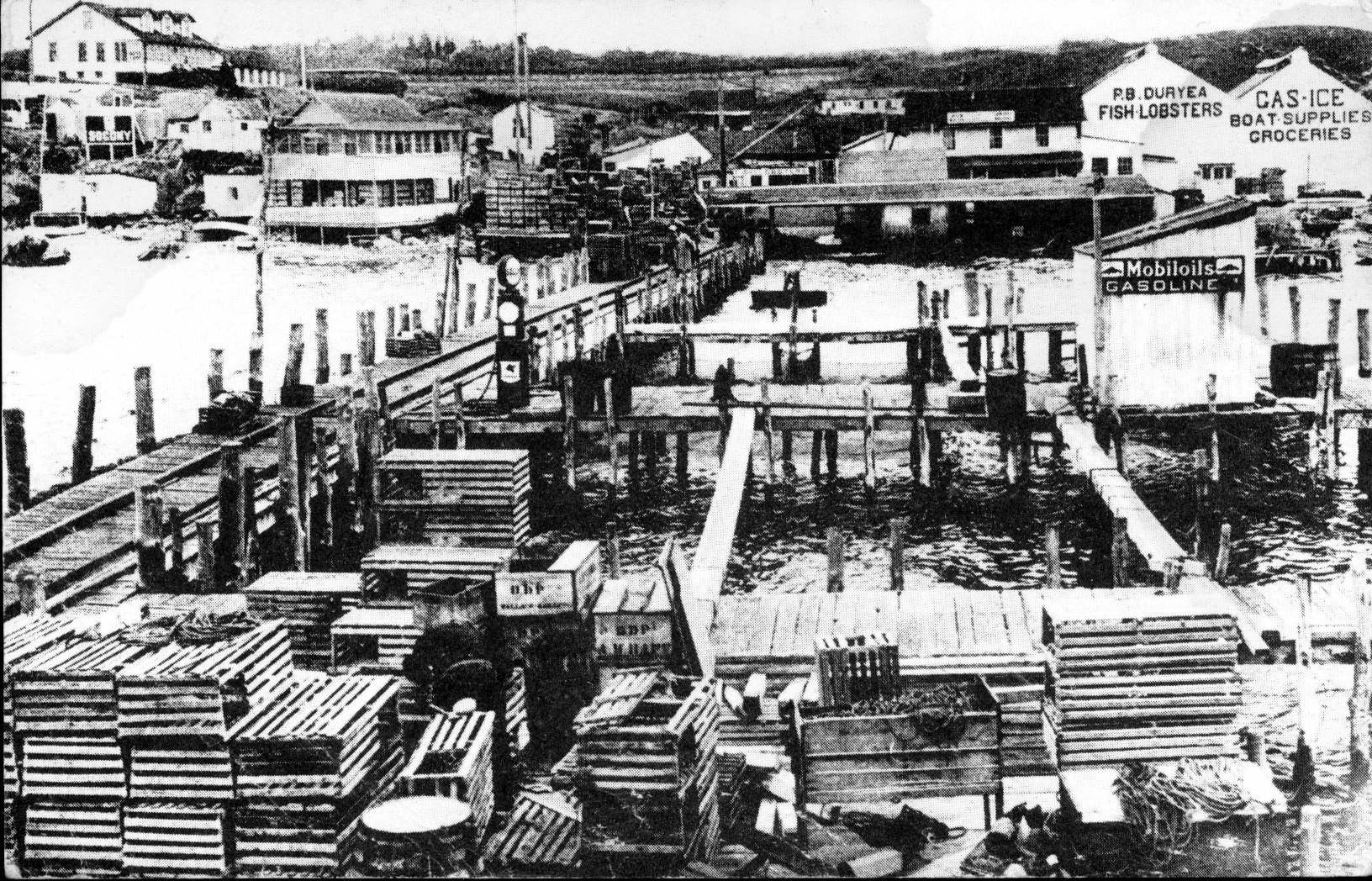 There are quite a few postcard views of this Fort Pond Bay scene that date from the early 1900s, but this one is a little different because it looks more closely cropped, as if a camera were positioned high, maybe on the mast of a boat. The close angle offers a sense of intimacy, reminding us that the fishermen and families who lived here formed a tightly knit community.
There are quite a few postcard views of this Fort Pond Bay scene that date from the early 1900s, but this one is a little different because it looks more closely cropped, as if a camera were positioned high, maybe on the mast of a boat. The close angle offers a sense of intimacy, reminding us that the fishermen and families who lived here formed a tightly knit community.
Fish boxes appeared everywhere this time of year in Fort Pond Bay Village. An April 5, 1929 story in the East Hampton Star provides a visual, as well as an “audio” description: “Montauk village is active with the coming of moderate weather. The steady tap, tap of the hammers tells the story that once again hundreds of boxes are being made for the shipment of fish by the Montauk Fish and Supply Company. The E.B. Tuthill Co. has opened for the season, Capt. Tuthill having arrived last week, and the men having reached Montauk on Sunday.” Perry Duryea would buy the Montauk Fish and Supply Co. from E.B. Tuthill only two years later, in 1931. His company name can be seen on one of the buildings in this postcard.
It wasn’t just fishermen who made these fish boxes, however. We know from Emily Cullum that her mother, Vangy Pitts Burke, as well as other children who lived on the Bay, could earn extra cash by building fish boxes for fishermen. These boxes also functioned as a playground. Vangy’s brother, Vitus Pitts, wrote a letter to Ellen Berg when they were still children, well before 1920, asking her, “Do you remember the fun we all had playing hide-and-seek among the fish boxes last summer?” On Fort Pond Bay, it seemed to stay light out until 10:00 at night.
Fish boxes were sturdier than they look in photographs. A LIRR boxcar could hold 150 fish boxes, each containing 200 pounds of fish. They had to be reliably stackable, without collapsing. When a 5- or 6-layered stack of fish boxes, 10 feet tall, appeared on the docks of Fort Pond Bay, it took on a structural appearance, akin to modern sculpture.
That may be why this photograph is so visually compelling. It’s not just a picture of a village. It’s a beautiful, mathematical portrait of a dock area laden with right angles. The architectonic framework is repeated in the criss-crossing elements of the wooden walkways, and duplicated in the straight angles of the houses behind them. This “Cubist” imagery is accidental, but somehow, the composition looks put together by an artist and makes the view pleasing to the eye.
Celina McDonald Seitz, who grew up in Montauk, donated this image of Duryea’s Pier to the Montauk Library. Celina, like Emily, her cousin, and Vitus, her uncle, knew a thing or two about fish boxes.

Reply or Comment